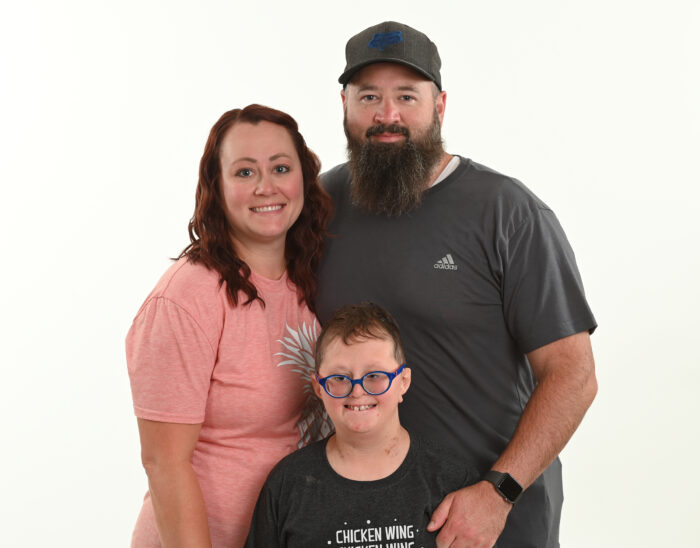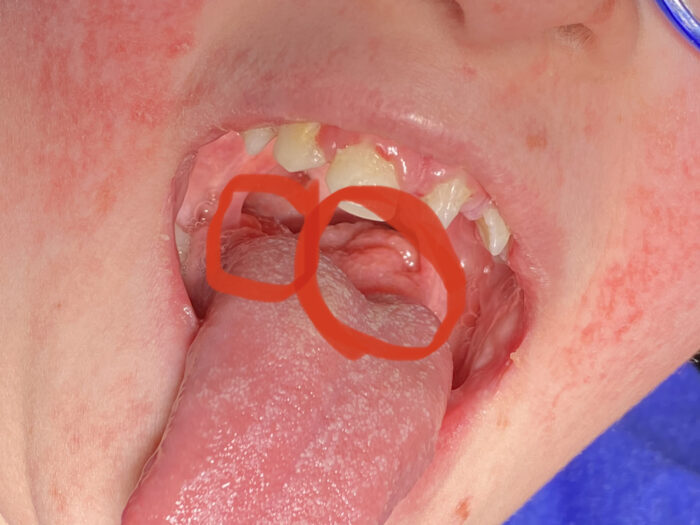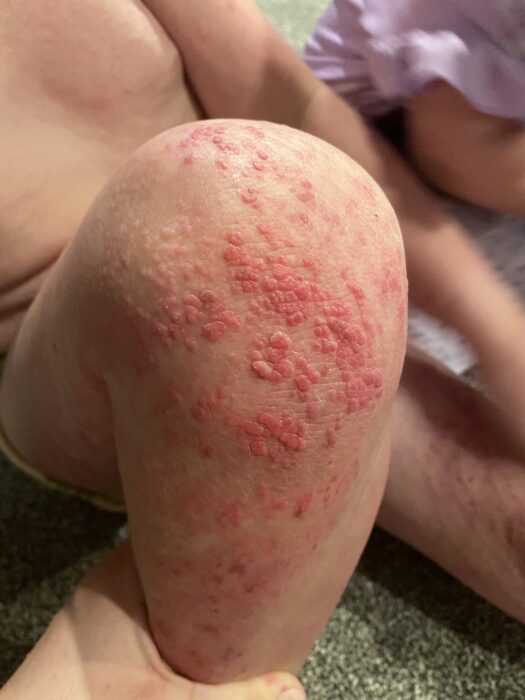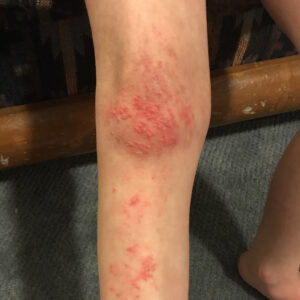Ten-year-old Maximus Sessions just wants the papillomas on his fingers, toes, and knees to go away. They feel bumpy, can be itchy, and sometimes they break open and bleed. They are at the top of the list of things he doesn’t like about his condition.

The Utah tween is affected by Goltz syndrome. His papillomas started at birth, and he would really like for his doctors to get rid of them. Papillomas are benign, wart-like growths that are common in Maximus’ type of ectodermal dysplasia, which is also referred to as focal dermal hypoplasia.
Dr. Cory Jonak has written a new article about Papillomas in Goltz Syndrome to help affected individuals better understand what they are and how to treat them.
According to the article, papillomas can be found anywhere on the skin surface. They may also be on the lining of some internal organs and body cavities which are called mucosal surfaces, such as the mouth, nostrils, airway, esophagus, vagina, rectum, and the eyelid margins.
Download Papillomas in Goltz SyndromePapillomas Can Cause Issues
Many papillomas won’t cause any problems for someone with Goltz syndrome. However, others can cause pain, discomfort, or other issues depending on its location and size. The larger it is, the more likely it is to cause a problem.
Brandie Sessions, Maximus’ mom, said that he also gets papillomas in his mouth and down his throat.

“The ones that develop in his throat and his mouth cause a lot of problems,” Brandie said. “He snores more, doesn’t sleep well when they get big, and doesn’t eat well either.”
Doctors are still learning about papillomas and the problems they cause in Goltz syndrome. Dr. Jonak addresses several different treatment options in the article and when they are used.
As many papillomas do not pose a risk to an individual’s health, we recommend that papillomas only be treated if they are causing pain, if they are impairing function, or if their removal is desired for cosmetic purposes. In all cases, it is important to weigh the relative risks of intervention against the risk of non-intervention before proceeding with any treatment.
– Dr. Cory Jonak
The Sessions family is trying a new laser treatment on the papillomas Maximus has on his knees.

“We have done five treatments and are still trying to find the right number for the laser to have success—IF it will work,” Brandie said. “We are hopeful. For the ones in his mouth and throat, we go in every three months for a scope and if found to be big enough, we do surgery to remove them. They don’t completely go away and they come back.”
They May Come Back
Dr. Jonak cites that the chances of a papilloma returning after removal has been reported as high as 25%. Younger individuals have a higher chance of the papillomas coming back. Because of this, you may have to have multiple treatments like Maximus, as well as Christyn Luallen have.

Christyn Luallen, who is also affected by Goltz syndrome, only gets papillomas in her throat and has to have them routinely removed.
She says she was about five years old when she had her tonsils removed. A year or so later, they thought the tonsils had come back. However, they discovered papillomas at the back of her throat, from the base of her tongue to the voice box. They began a cycle of having them checked every three months to see if they have returned.
“I can feel them now. My voice gets hoarse or I might lose my voice. Then, I know it’s time for surgery to have them removed.”
– Christyn Luallen
Christyn and her grandma, Jana Luallen, read that papillomas may lessen when kids reach puberty. That has been true for Christyn, who is now 18 years old.
“It feels like something is in my throat when I have them. They don’t hurt, but it feels like my throat is closing. The doctors suggested that I drink a lot of liquids when I eat to help me swallow and get food down, especially drier meats. That helps.”
For Christyn, healing after the outpatient surgeries depends on how many papillomas she had removed.
“Sometimes I am up the next day. Sometimes I’m out for a week. I may be on a liquid diet for two days. If they go deeper in my throat, it may be a liquid diet for 7-10 days.”
She recommends that if you begin to feel them in your throat, to have them removed sooner rather than later. She said that the surgery is easier and it doesn’t take as long to heal if you have them removed while they are smaller.
Finding a Doctor to Treat Papillomas
Dr. Jonak said the location of the papilloma will help determine what kind of doctor you should see. He suggests that your primary care provider check for new papillomas and refer you to other specialists for treatment. Both Christyn and Maximus see their ear, nose and throat doctor for the papillomas in their mouth and throat.
“The good news though is that even though many different types of providers may need to be involved, we do have many treatment options and methods available at our disposal, and with regular follow-up and care, many papillomas don’t have to be a burden,” Dr. Jonak said.
Read Dr. Jonak’s full article on Papillomas in Goltz Syndrome to learn more about what papillomas can look like, problems they may cause and different treatments.
If you or your child is affected by Goltz syndrome, what has your experience been with papillomas? Tell us in the comments below.

Find this all so interesting..my daughter has Goltz Syndrome diagnosed 6 weeks after birth and now almost 45 on 13th April..have never been able to contact anyone who had same condition as Adele xx